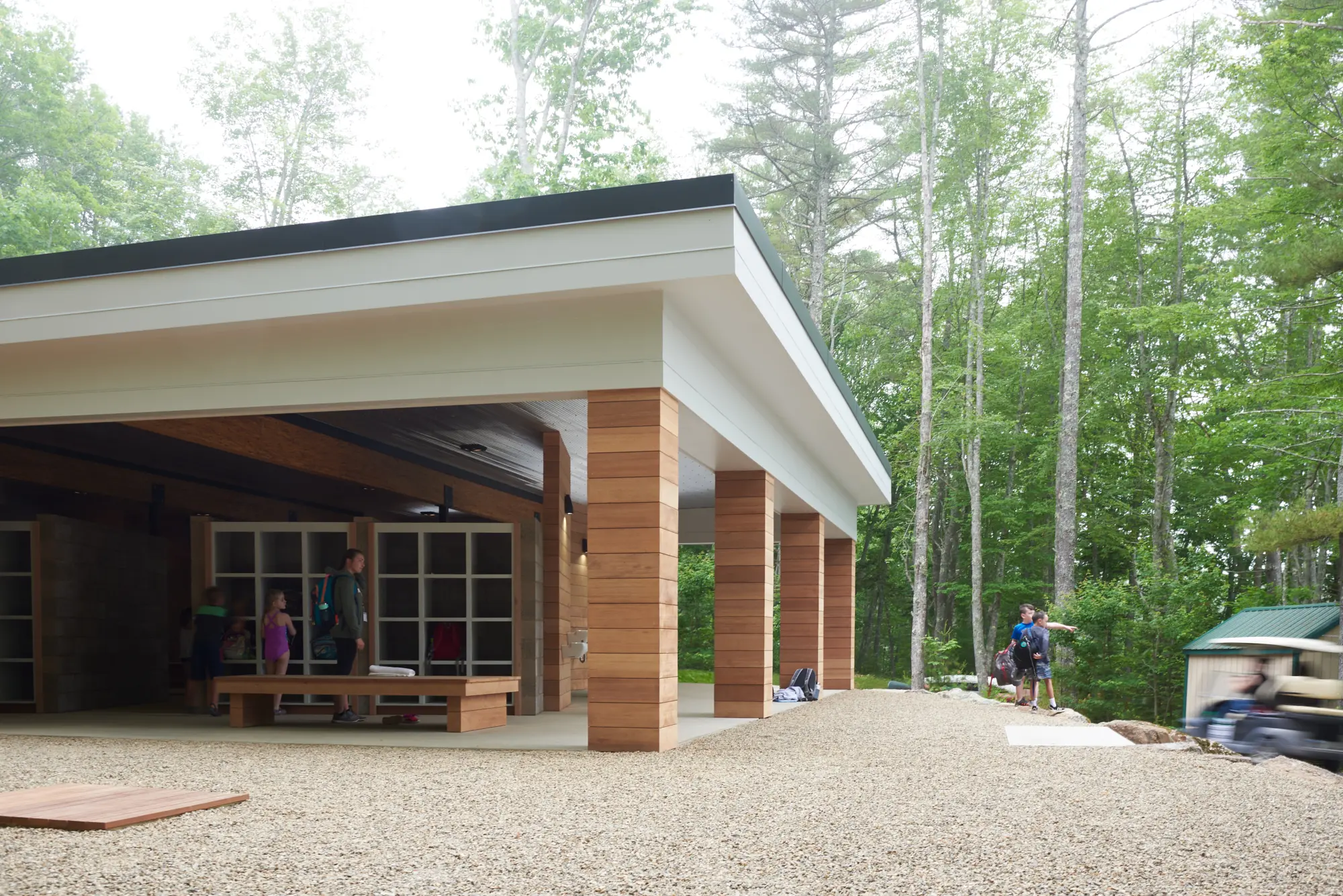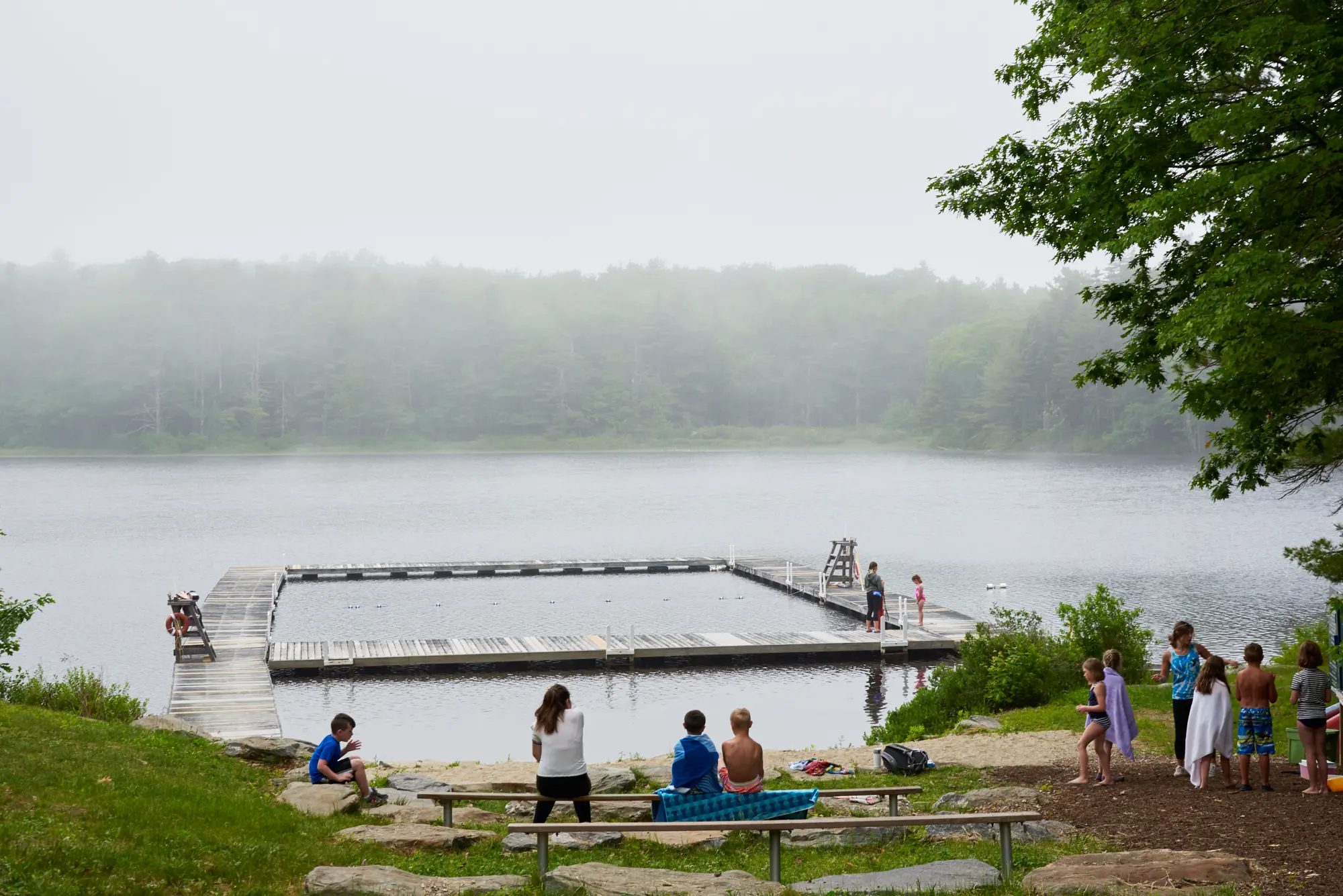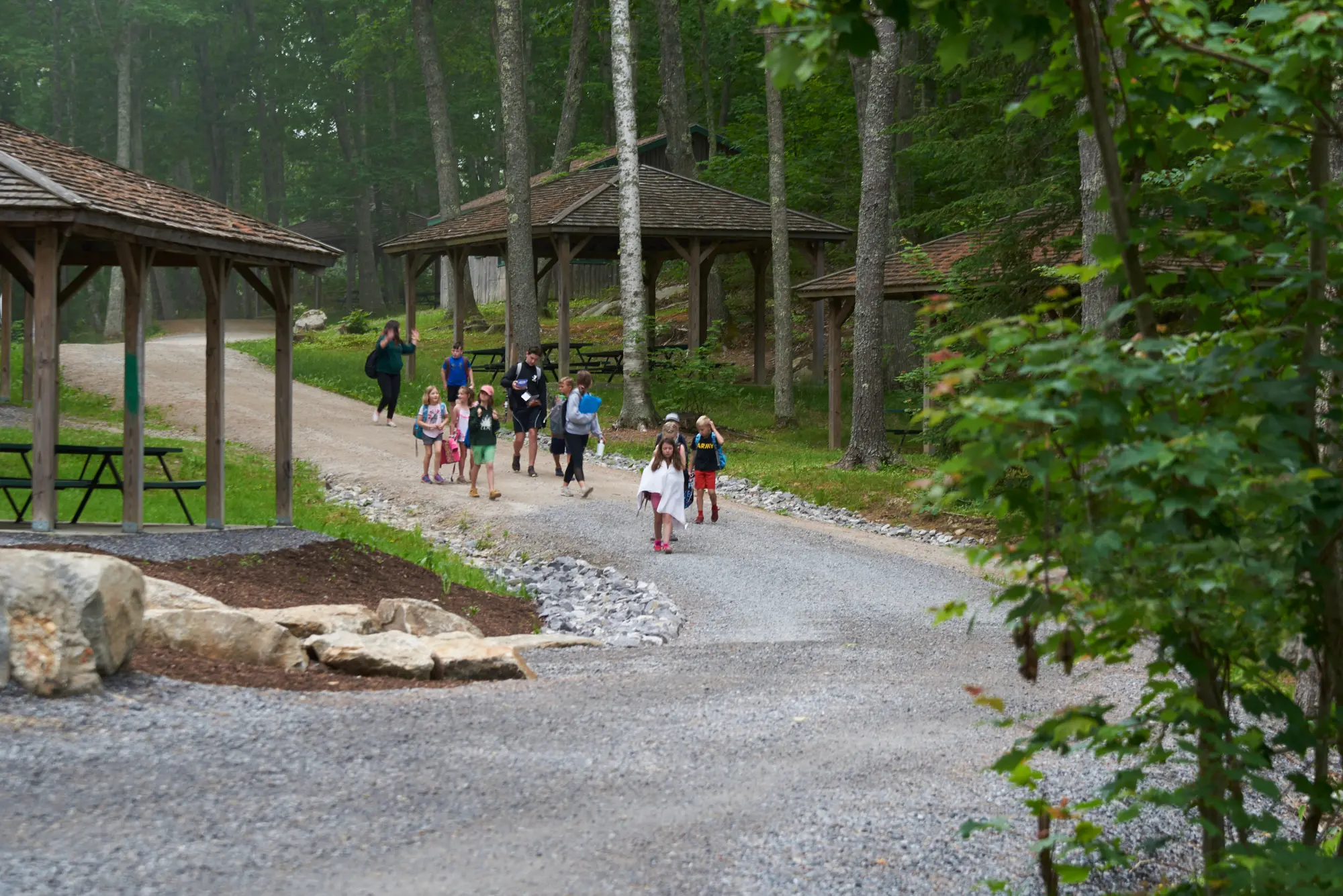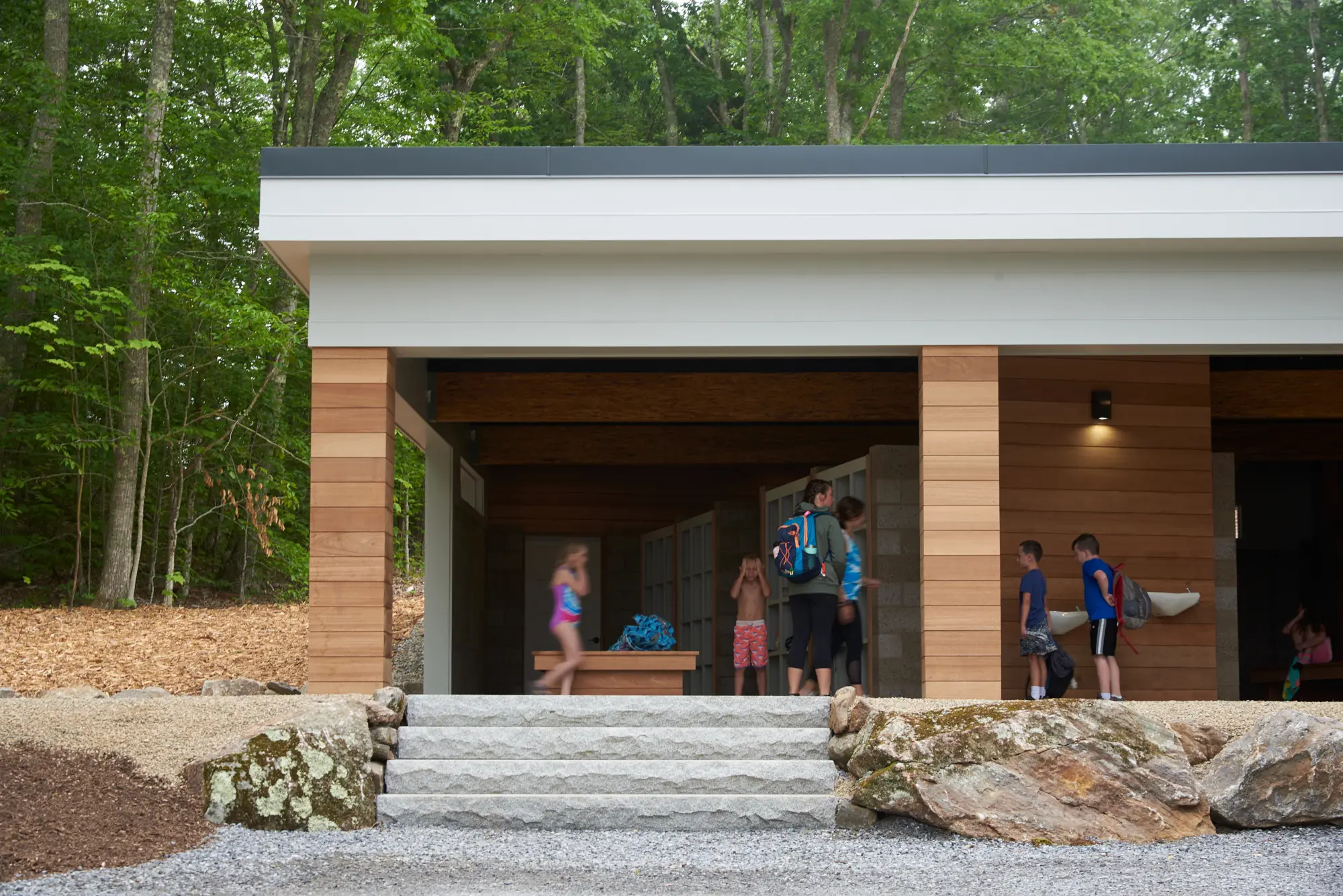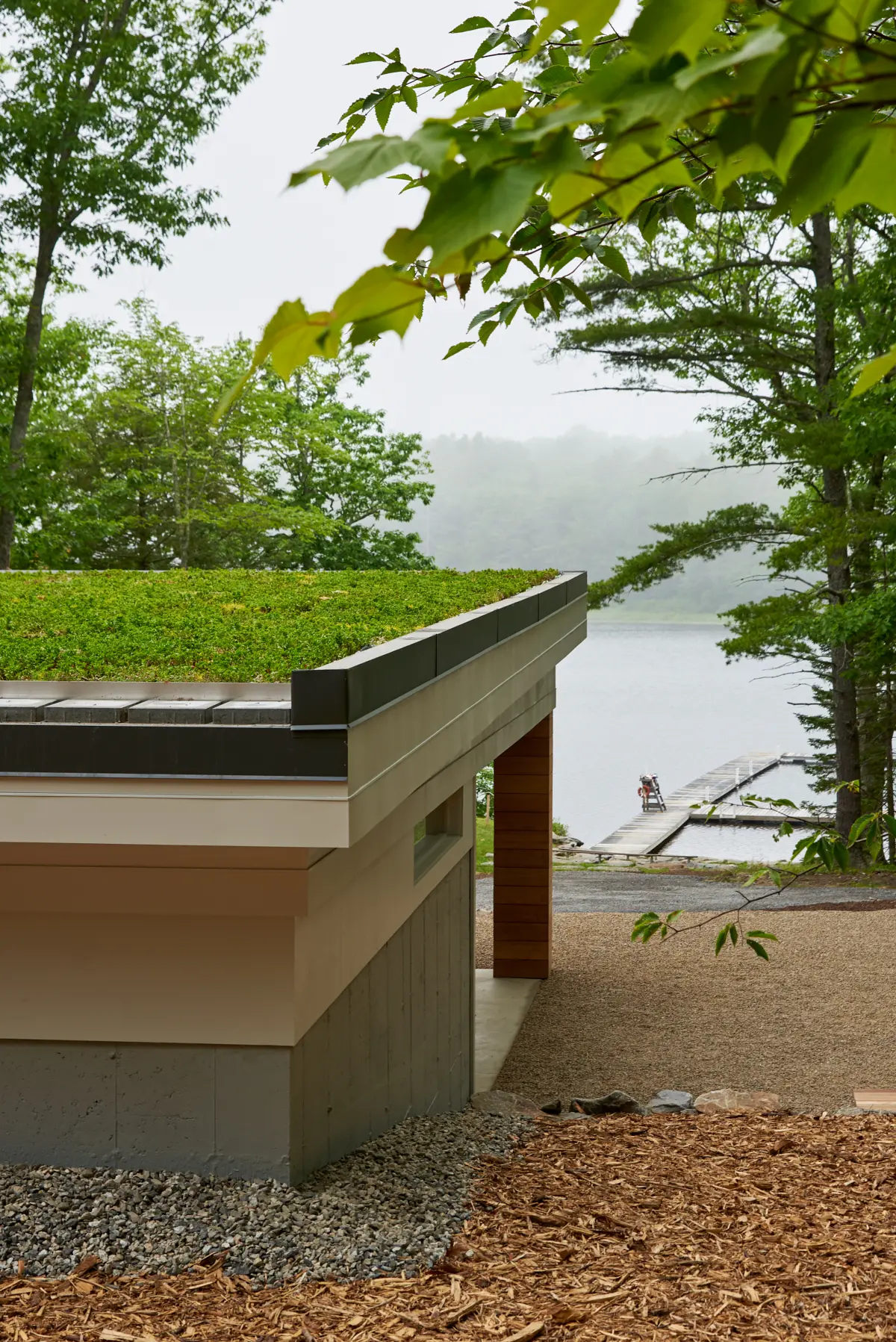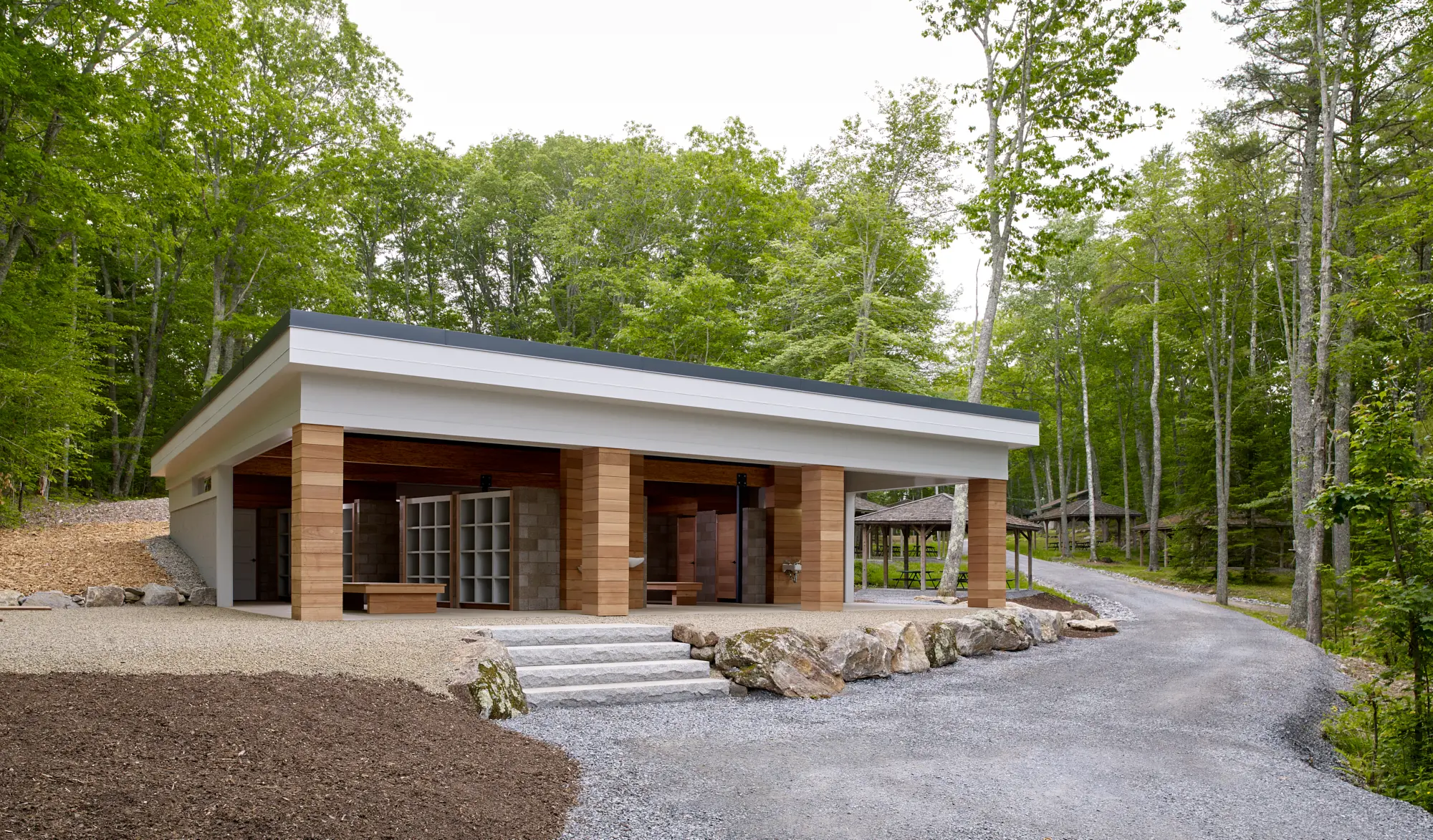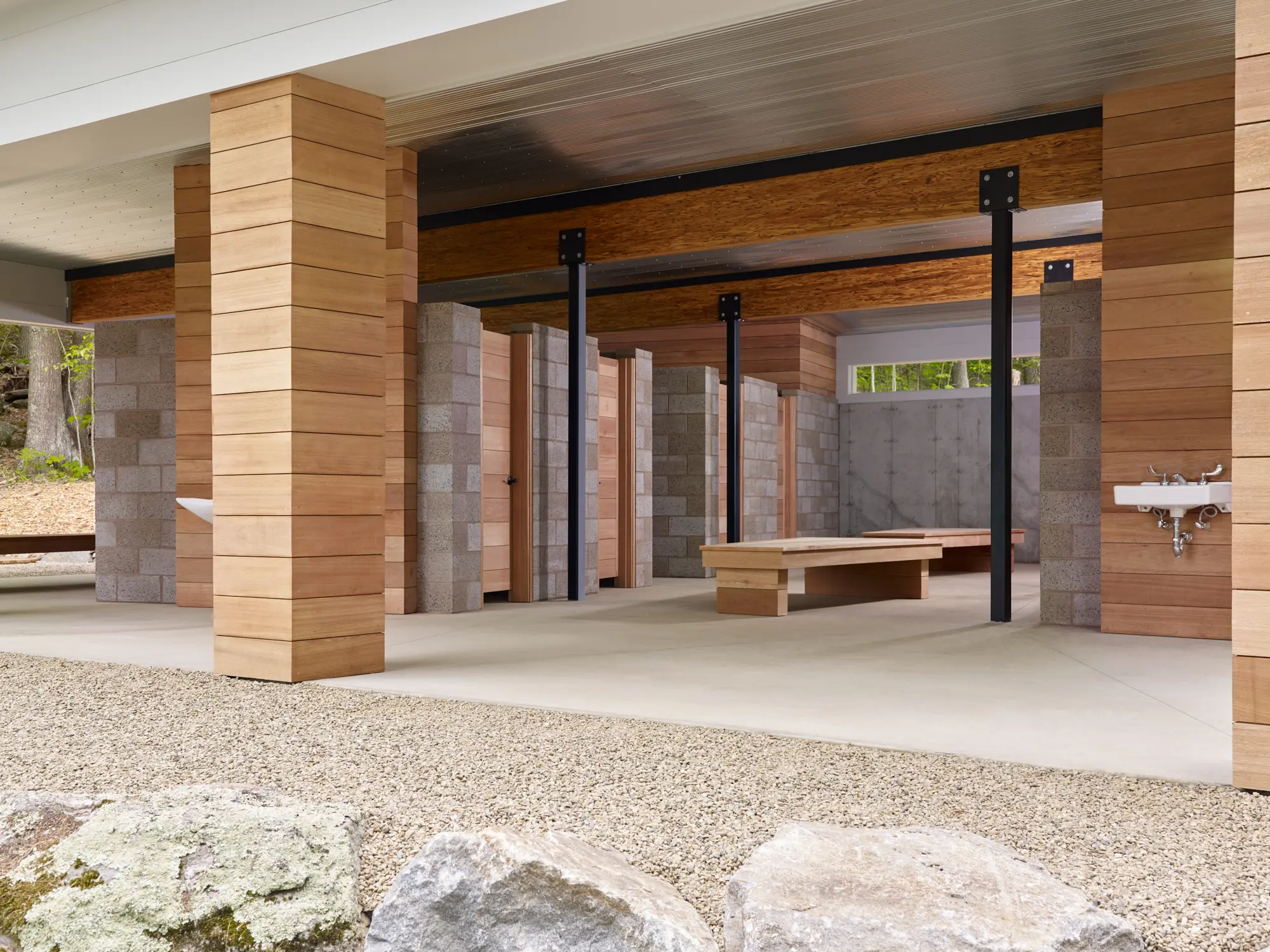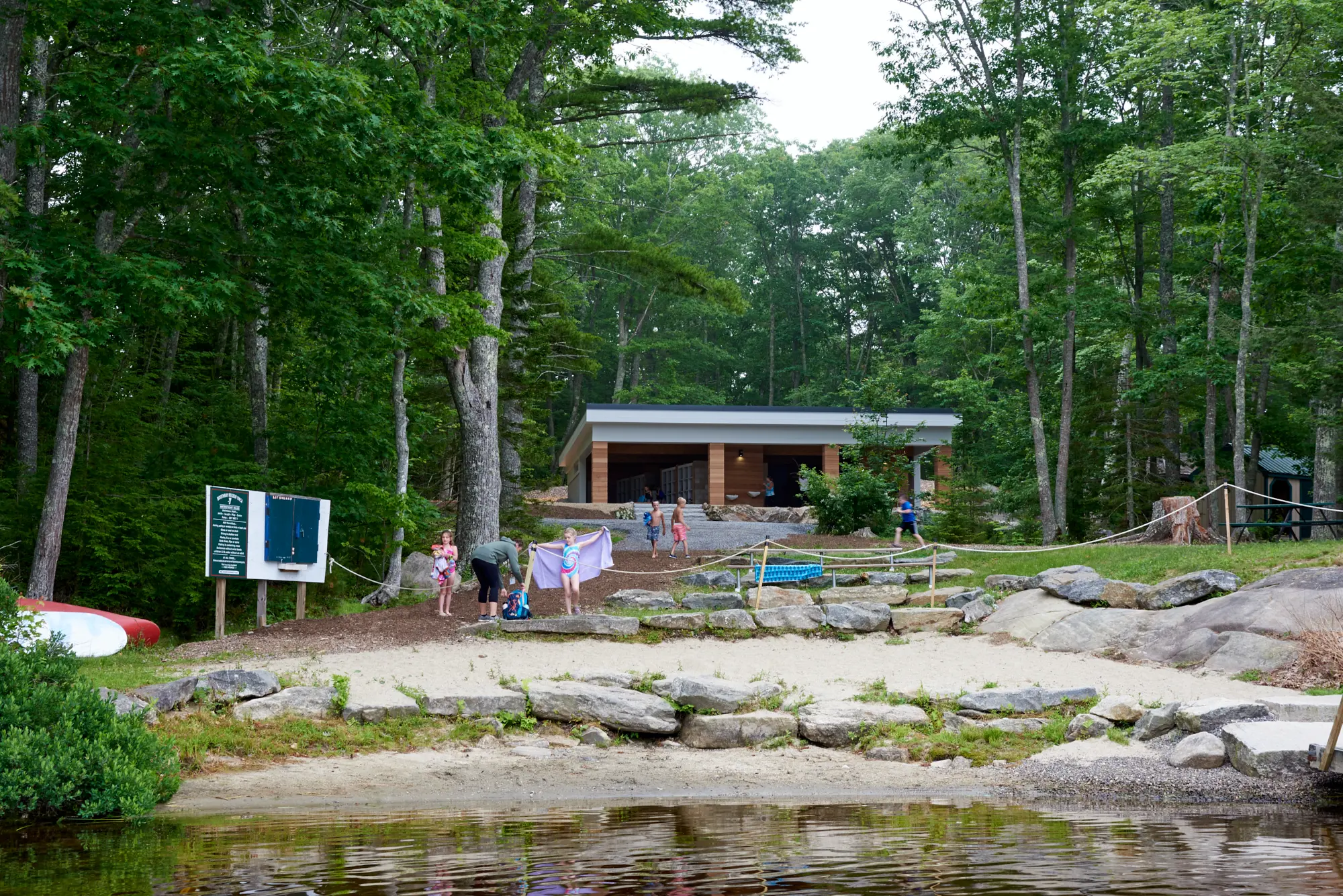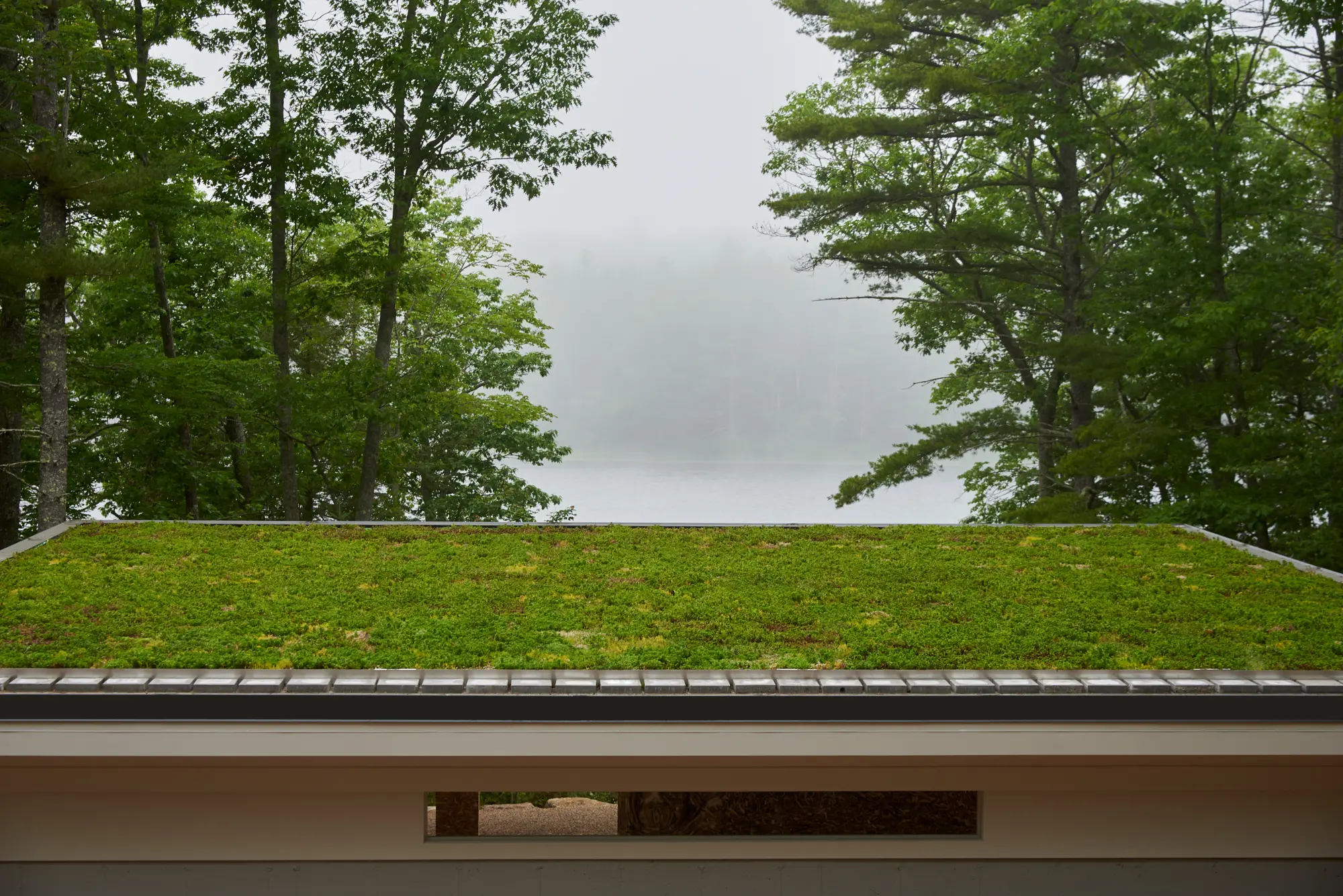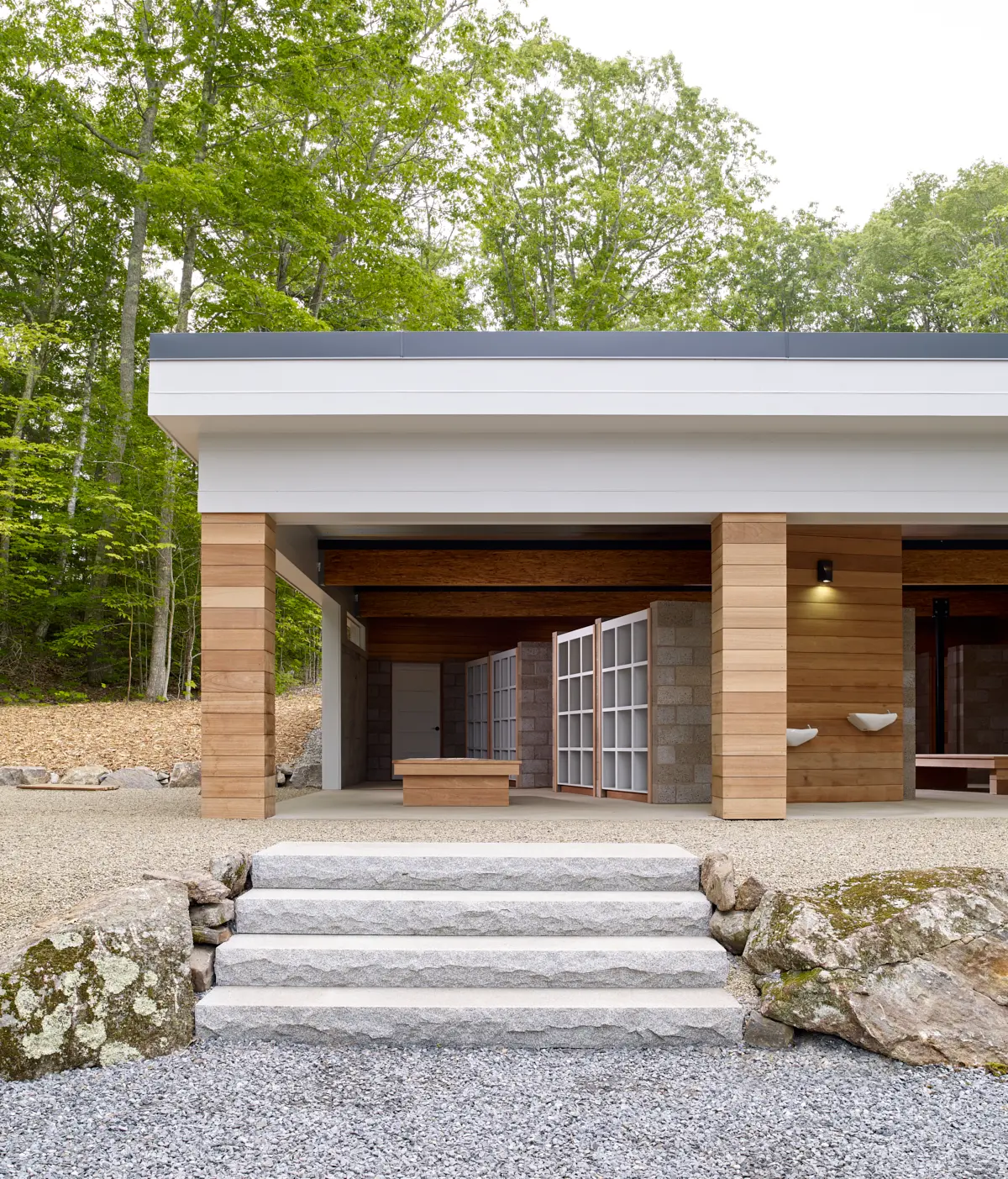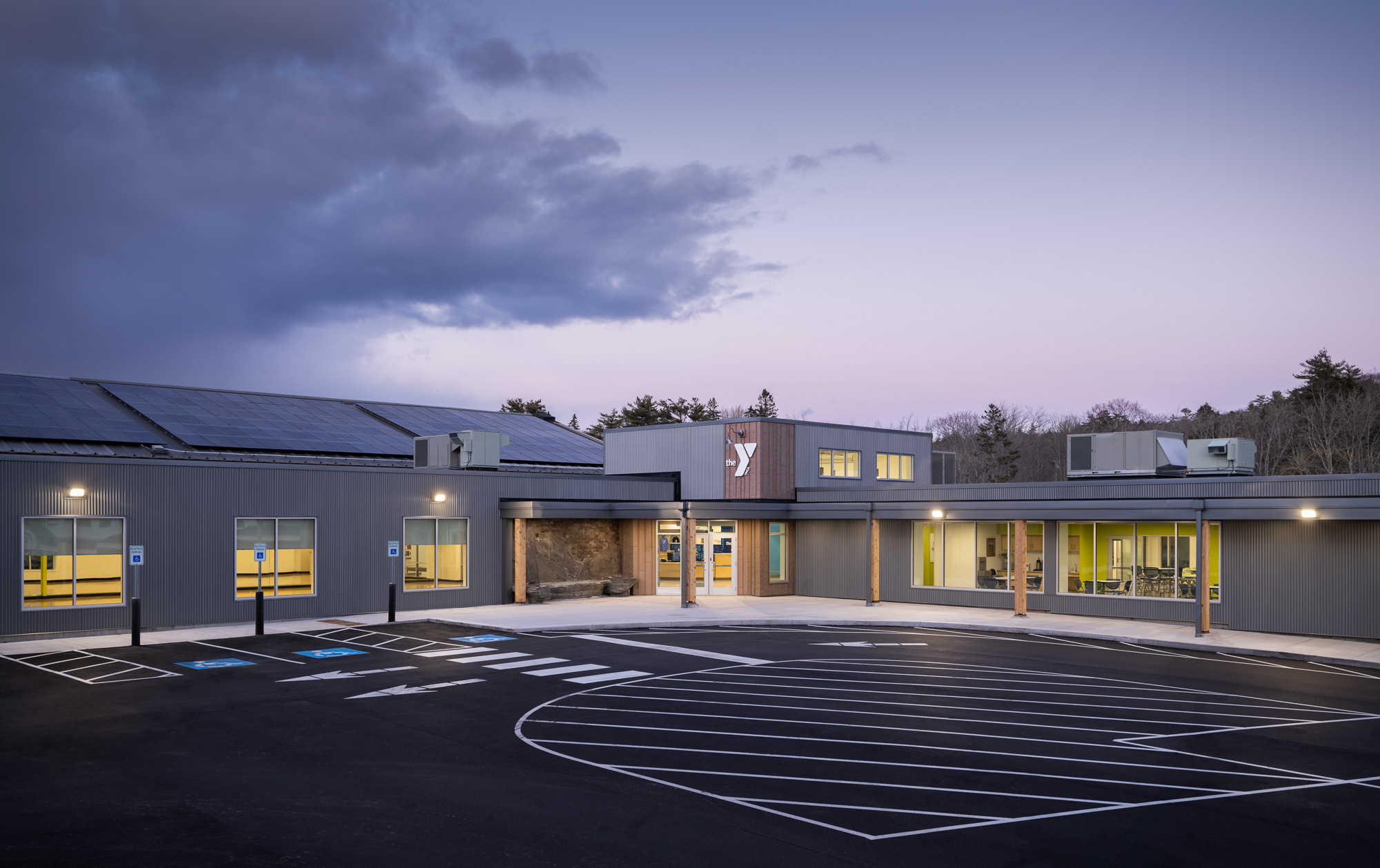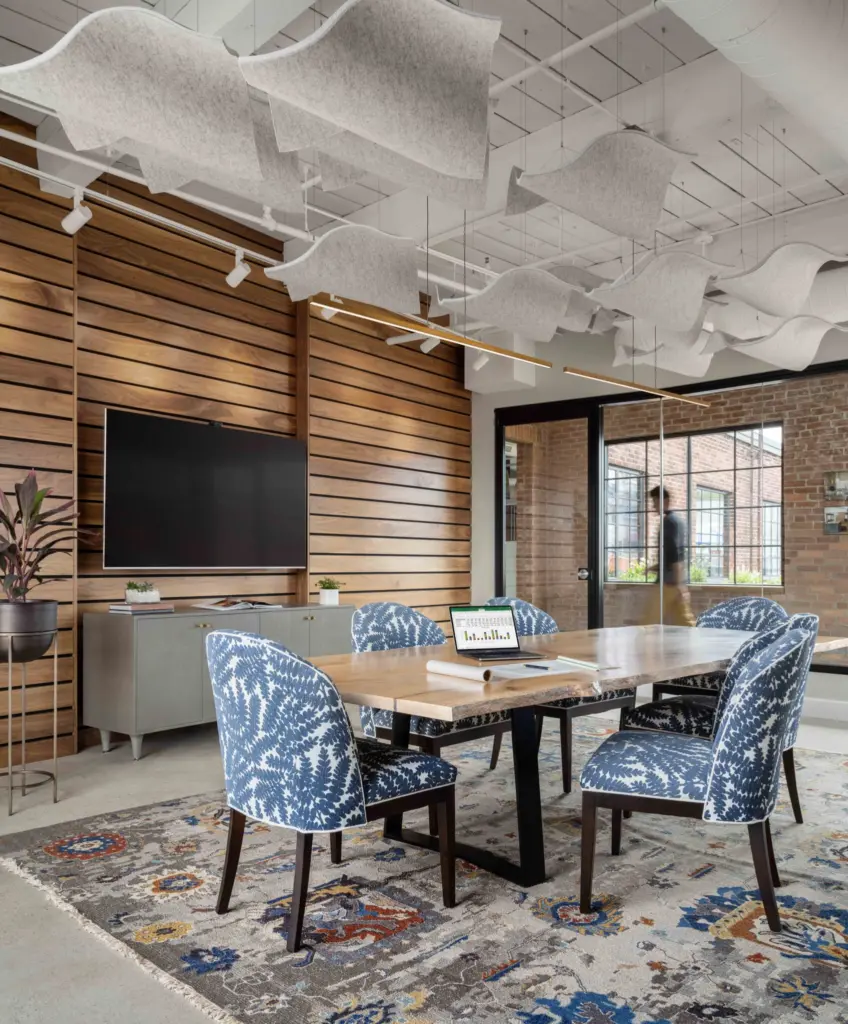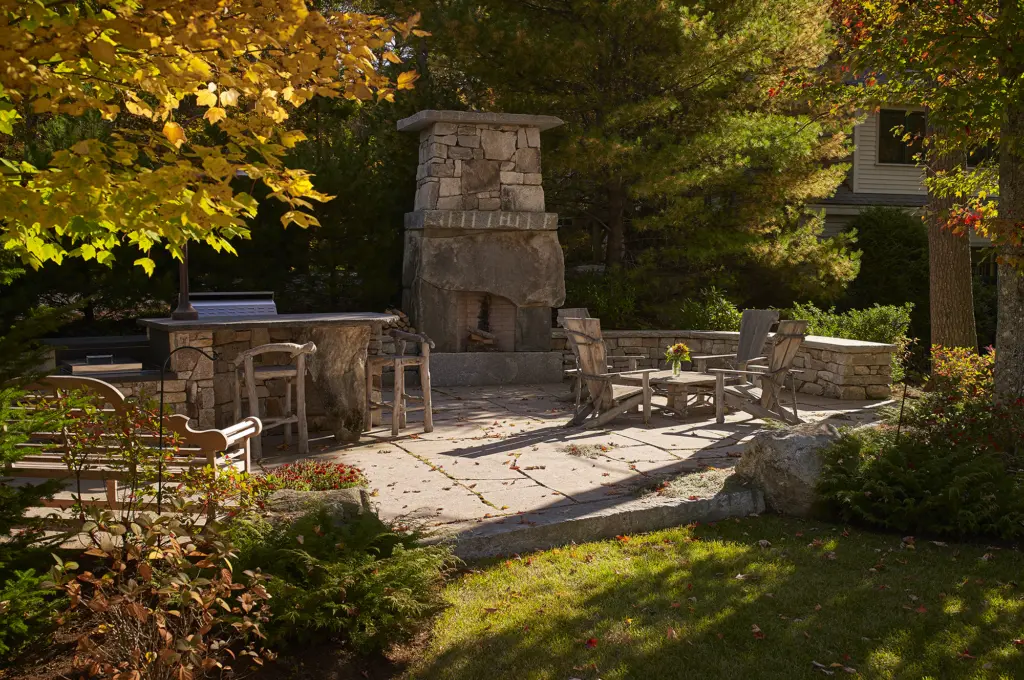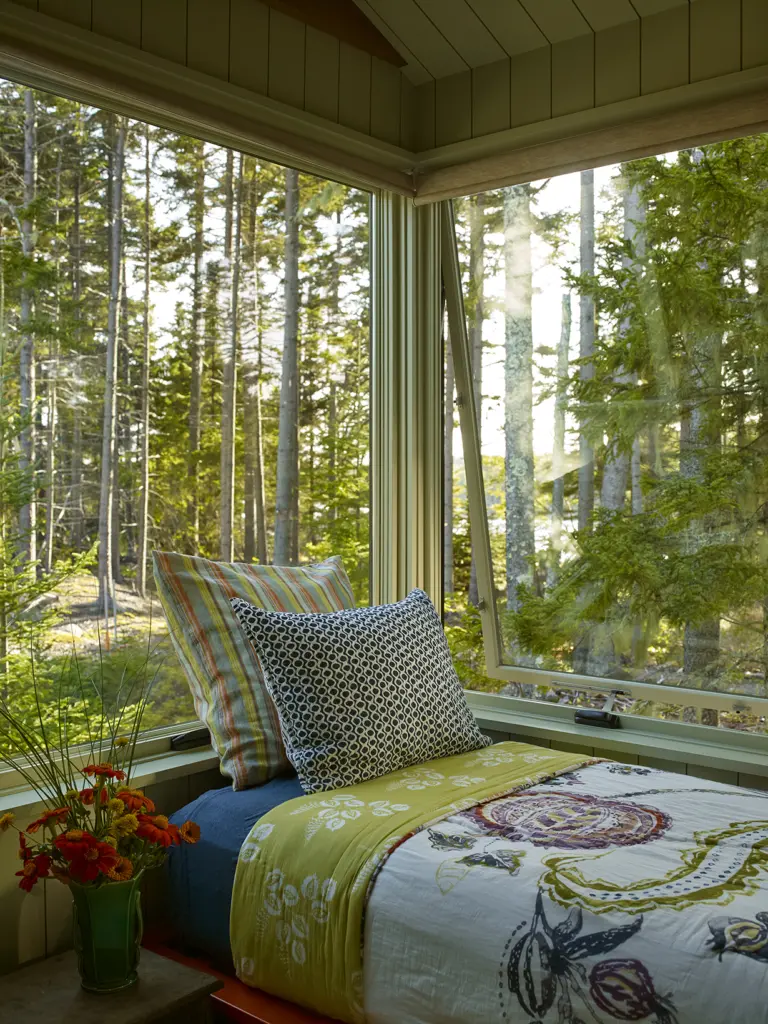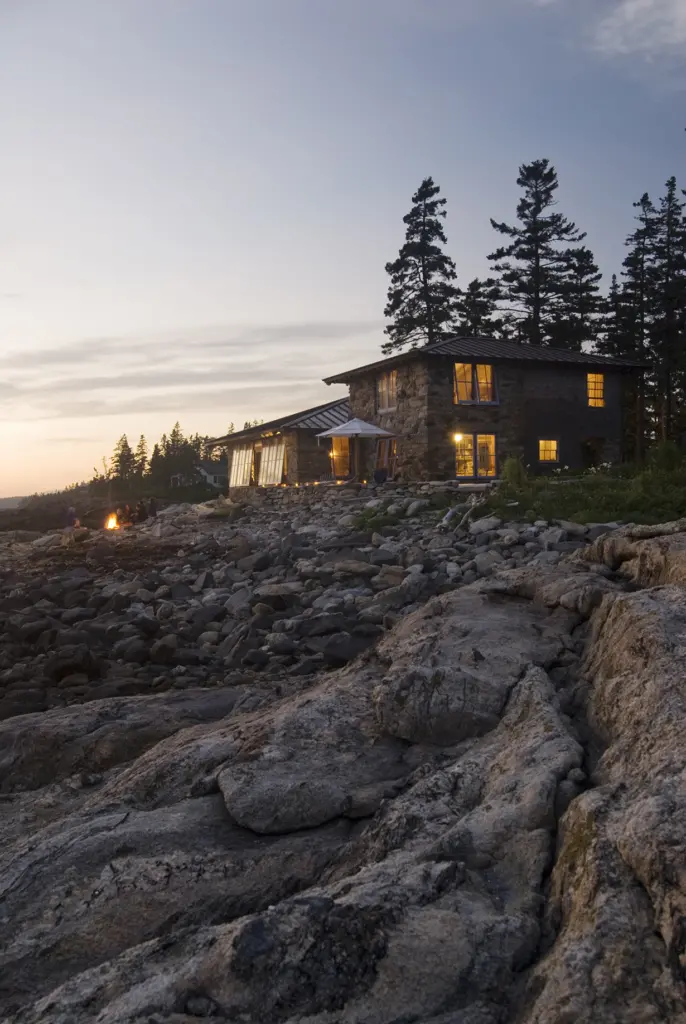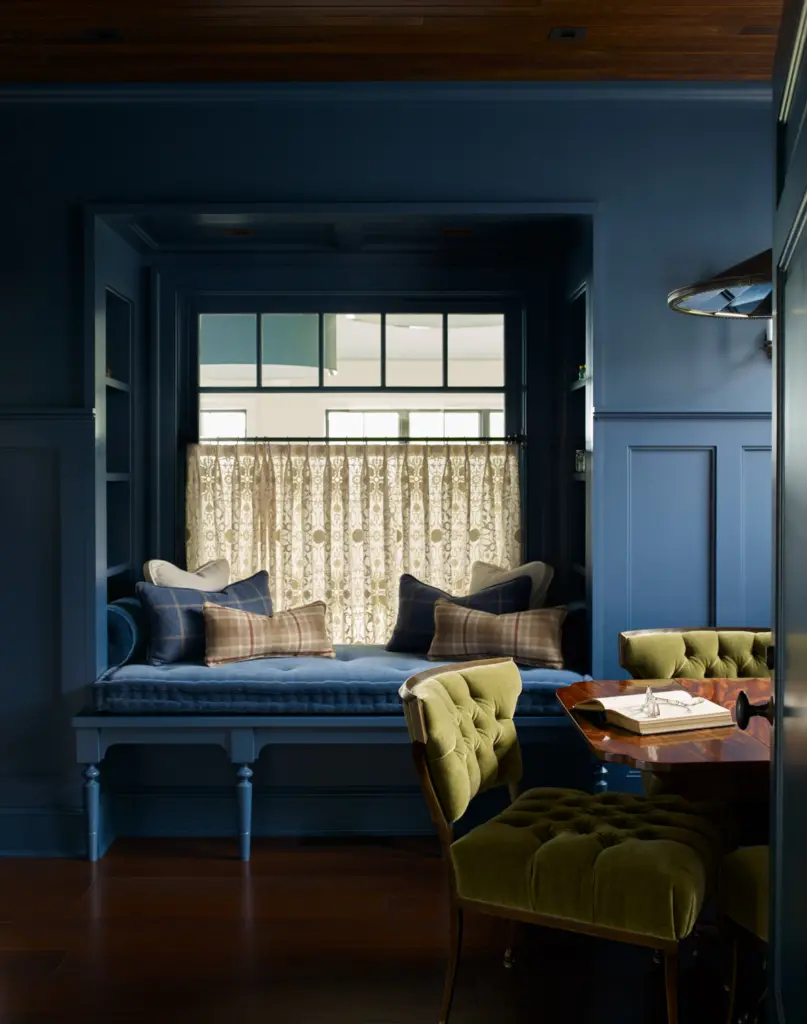The project is the first phase of a master plan that addresses site improvements related to stormwater management and erosion control and is part of a collaboration among Knickerbocker Group, the Boothbay Region YMCA, the Boothbay Region Water District, the town of Boothbay, and the Knox–Lincoln Soil and Water Conservation District.
The location, a hill facing the waterfront that had been partially cleared of trees, was ideal for erosion control, which was aided by simple but hardy landscaping for managing water flow. In addition, an extensive green roof of a sedum carpet needs little maintenance and no permanent irrigation system and provides changing colors with the seasons, from white flowers in the late spring to vibrant green in the summer to red tones in the fall.
